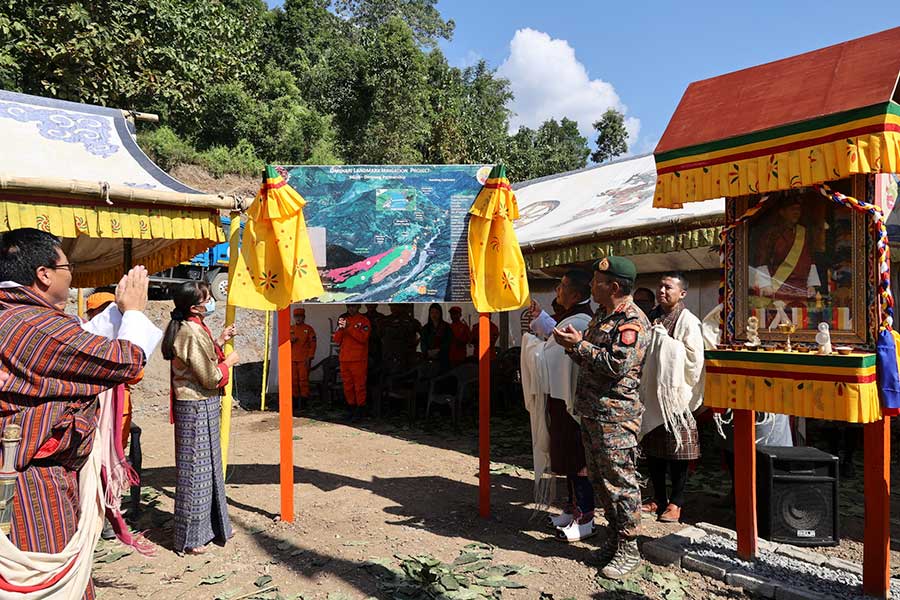
Rice production in Pemathang Gewog of Samdrup Jongkhar has had an up-and-down outcome in the past few years. Due to the shortage of irrigation water, rice yield in the gewog varies each season depending on the water supply they get. But this problem will soon be no more thanks to the Omshari Landmark Irrigation Project. The Desuung National Service project to construct one of the largest irrigation water channels in the country was launched yesterday.
More than 630 acres of paddy fields are cultivated each year in Pemathang, one of the highest among the gewogs in Samdrup Jongkhar.
But due to the shortage of irrigation water, all five chiwogs in the gewog share a small stream called the warong-ri amongst them. Meanwhile, some have also been relying on rainfall.
 Farmers say the Khamtey rice, which is the most popular variety here, needs a lot of water.
Farmers say the Khamtey rice, which is the most popular variety here, needs a lot of water.
“We need to water the fields right now because the paddies are in the growing stage. After about two weeks they won’t water. Due to the shortage of water, the crops are drying up and not growing well. It looks like production will be less,” said Lhawang Dema.
Another farmer, Tashi Norbu, says all the people have “been sharing the only water that is available with each other. We face many challenges to get enough irrigation water.”
“Without water, production is less. The Paddies are all small since they did not get enough water. Production will be better if there is enough water,” said Tendi.
The problem will be solved in less than a year if everything goes as per plan. The Agriculture Ministry along with the Desuung office and local leaders intend to construct a 23-kilometre irrigation channel from Omshari within seven months. 120 Desuups are engaged in the construction works.
According to the Dzongkhag Agriculture Office, about 13 acres of fallow land will also be revived for paddy cultivation once the project is complete. Farmers will also be able to expand their areca nut and winter vegetable production.
“We depend on areca nuts to make money. If we can get water from Omshari, it will benefit us a lot with paddy cultivation as well as with areca nuts and we can make some more income,” said Samten.
“Right now we don’t have enough water to grow vegetables. Once we get water from Omshari, we can grow cabbages, onions and other vegetables, said Lal Badhuar Acharya. “We can grow all types of vegetables here.”
The project will feature climate-resilient irrigation infrastructure that can cope with flash floods and high-density polyethene pipelines that will ensure zero loss of water. Officials say the system will be more efficient and easy to maintain.
Once complete, the Nu 130 M worth project will benefit 384 households.
Kinley Wangchuk, Samdrup Jongkhar
Edited by Yeshi Gyaltshen








